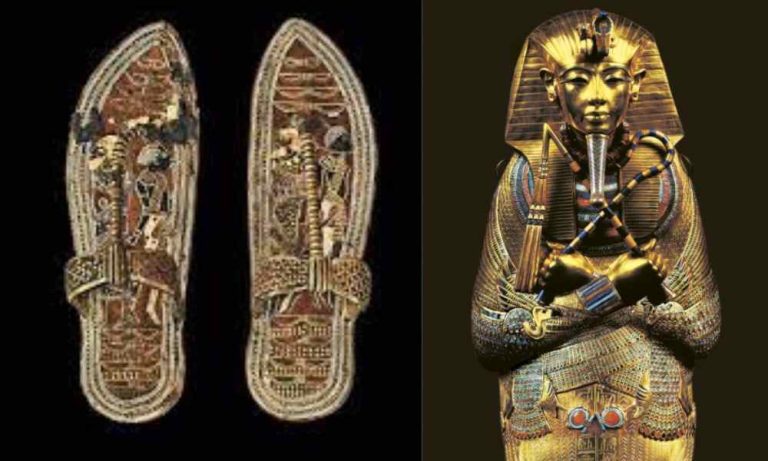These People Live In Tree Houses That Are 150 ft High!
The Korowai tribe, discovered about 35 years ago in a remote part of Papua, leads a life unlike any other. They are people living in tree houses. With a population of around 3,000, this isolated tribe inhabits “Rumah Tinggi” or tree houses. Some of them reach up to 50 meters (150 ft) above the ground. The Korowai are among the few mainland Papuans who do not use the “koteka,” a traditional garment. This lifestyle offers a glimpse into a culture that has remained largely untouched by modern civilization for centuries.
Korowai live about 150 kilometers from the Arafura Sea. They are skilled hunter-gatherers who rely heavily on their environment for survival. Before 1975, they had virtually no contact with the outside world. A documentary film crew could only visit Korowai settlements in 1992. Even today, many Korowai continue to live in traditional ways. Let’s find out more about their daily life.
Tree Houses and Daily Life
The Korowai build their tree houses using large, sturdy trees as the main pillars. They often select ironwood or banyan trees for their strength. People living in tree houses construct floors from branches and walls from sago tree bark. Also, they make roofs from forest leaves, specifically, nipa leaves that are resistant to the elements. They use strong rattan ropes to bind the structures together securely. Also, a long ladder extends from the ground to the entrance, often retractable to protect against intruders or wild animals. Before settling into a new house, the Korowai perform a night ritual intended to expel evil spirits. This ensures their safety in their new dwelling.


Furthermore, each family maintains a sago garden, the staple of their diet. This provides not only sustenance but also building materials. Korowai gather vegetables, fruits, and insects from the forest, supplementing their diet with protein from hunting. They keep pigs and dogs as pets. They slaughter pigs only for rituals or special occasions, while dogs assist in hunting expeditions. For fishing, they utilize handmade bows and arrows, showing a high level of craftsmanship and knowledge of their surroundings. In earlier times, they hunted crocodiles in nearby rivers for meat and skin, though this practice has significantly decreased.

Customs and Beliefs of People Living in Tree Houses
The Korowai customs include a sago party ritual held during births, marriages, and deaths, symbolizing the continuity of life and the connection to their ancestors. Socially valuable items like pigs, dog teeth, and shells are presented during these occasions, serving as both gifts and symbols of status. Furthermore, the receiving group is expected to pass these items on to the next party, fostering a culture of sharing and reciprocity. When a person dies, land rights automatically transfer to the descendants, often leading to disputes. If a man’s brother dies, he inherits his sister-in-law as men must pay a dowry to marry, thus maintaining family alliances.

The Korowai believe in maintaining the balance of nature and have an intricate understanding of health, sexuality, and the world around them. They believe the universe is filled with dangerous spiritual beings and that ancestral spirits play a special role in their daily lives. Elderly women, who are believed to possess spiritual knowledge, often act as healers and spiritual leaders. Additionally, the Korowai hold that people can transform into animals, a belief that informs their practices and rituals. They also believe the spirits of the deceased linger around the tree house for some time, influencing their behavior and actions.

Conflict and Cannibalism
Historically, conflicts among the people living in tree houses have arisen due to various reasons. These include adultery, theft, murder, and accusations of practicing evil magic, known locally as “khakhua.” For instance, they practiced cannibalism as a form of retribution against and punishment for suspected evil shamans. Clan members would kill the shaman and subsequently share and eat the body parts, believing this act would rid them of malevolent spirits. In 2006, a television show filmed the execution and consumption of a person accused of being a “khakhua,” bringing international attention to their practices.

During such conflicts, certain rules apply; for example, pregnant women and children do not participate in cannibalistic acts, reflecting a sense of protection for vulnerable members of society. The death of a clan member often demands revenge, leading to long-standing hostilities between different groups. Marriage disputes can also cause conflict; if a woman from one family is mistreated, it often triggers retaliation. Adultery is typically resolved through exchanging goods, while bride abductions are settled by paying a dowry to the woman’s family. These customs show a complex social structure governed by rules and traditions deeply rooted in their belief system.
Impact of Outside Contact of People Living in Tree Houses
In the 1990s, outsiders began exploiting the Korowai area to harvest gaharu (Aquilaria malaccensis), a fragrant resin-producing tree highly valued in international markets. In 1997, local people sold 1 kilogram of gaharu to traders for about Rp. 4,000, while the same amount fetched $1,000 in European and Middle Eastern markets. This trade brought about increased prostitution and a rise in AIDS cases in the forests. Consequently, the trade dwindled by 1999, leaving the Korowai to adapt once again to a changing world.
Several documentaries have highlighted the people living in tree houses over the years. In 1993, a film crew documented them building a tree house and practicing cannibalism, bringing global attention to their unique way of life. Later, the BBC’s “Human Planet” featured the tribe in 2011, showcasing their resourcefulness and resilience. Anthropologist Rupert Stasch from Reed College in Oregon studied their culture for 16 months, publishing his findings in the Oceania Journal, further adding to the understanding of this unique tribe.
Modern Adaptations and Challenges
Researchers have noted the Korowai’s remarkable intelligence and adaptability, as evidenced by their ability to create settlements in such challenging environments. Among the many who have documented the Korowai, journalist Paul Raffaele spent four days with the tribe in May 2006. On the Smithsonian Magazine website, he noted that while the Korowai occasionally practiced cannibalism, they primarily consumed meat from animals such as cassowaries, snakes, lizards, deer, or wild boars. Beetle larvae also formed a crucial part of their diet, indicating a diverse approach to sourcing food.

Kembaren, a tour guide during Raffaele’s visit, mentioned that the Korowai still occasionally eat human meat, but this practice has significantly declined since their contact with outsiders. Almost all members of the Korowai tribe engaged in cannibalism in the past, which was not considered taboo, but now they increasingly look toward more sustainable and socially acceptable practices.
Conclusion
The Korowai tribe of Papua remains a fascinating example of a culture that has adapted remarkably well to its environment. They continue to live in tree houses that can reach up to 50 meters in height, adhering to traditional customs and rituals that have been passed down for generations. Despite the impact of modernity and outside influences, the Korowai people have retained much of their original lifestyle and beliefs. While practices like cannibalism have significantly reduced, the Korowai remain deeply connected to their cultural roots, navigating the fine line between tradition and change in an ever-evolving world.
Also Read:







